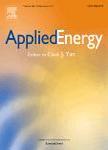版权所有:内蒙古大学图书馆 技术提供:维普资讯• 智图
内蒙古自治区呼和浩特市赛罕区大学西街235号 邮编: 010021

作者机构:Chinese Univ Hong Kong Sch Sci & Engn Shenzhen Guangdong Peoples R China
出 版 物:《APPLIED ENERGY》 (Appl. Energy)
年 卷 期:2025年第383卷
核心收录:
学科分类:0820[工学-石油与天然气工程] 0817[工学-化学工程与技术] 08[工学] 0807[工学-动力工程及工程热物理]
基 金:National Natural Science Foundation of China Shenzhen Science and Technology Program, China [JCYJ20220530143800001, RCYX20221008092927070] Guangdong Basic and Applied Basic Research Foundation, China [2024A1515240024]
主 题:Day-ahead economic dispatch Load forecast End-to-end learning Multi-task learning Learning to optimize
摘 要:The highly penetrated renewable energy resources have significantly increased the uncertainty faced by the power system. Accurate day-ahead economic dispatch (ED) is crucial for managing this uncertainty and ensuring the efficient use of energy resources. To guarantee the planned dispatch schedules align closely with actual operations, most existing methods focus on improving the accuracy of time-series load forecasting. However, minimizing the commonly adopted forecasting accuracy metrics, e.g., the mean squared error (MSE), cannot directly correspond to the fidelity of day-ahead ED. This misalignment for load forecasting limits the practical effectiveness of the existing methods. To this end, based on the multi-task learning technique and end-to-end learning framework, we propose the EDformer family which contains two learning frameworks, EDformer and EEDformer. Specifically, the proposed frameworks parallel multiple load forecasting tasks based on customized encoder-decoder structures and address the inconsistency between the forecasting accuracy metrics and actual ED costs through a customized loss function. Furthermore, the proposed frameworks adopt the Learning to Optimize (L2O) technique, utilizing fully connected neural networks based on data transposition strategies to learn the mapping relationships, replacing conventional solvers and thereby accelerating the training process. EDformer, through independent parameter training, achieves high forecasting accuracy while requiring high computational resources. EEDformer, on the other hand, adopts parameter- sharing techniques, slightly sacrificing forecasting accuracy to significantly improve computational efficiency, making the proposed EDformer family adaptable to different practical requirements. Validation using real data from Australia on the IEEE 9-Bus and 39-Bus systems proves the superiority of the EDformer family in enhancing day-ahead dispatch effectiveness.